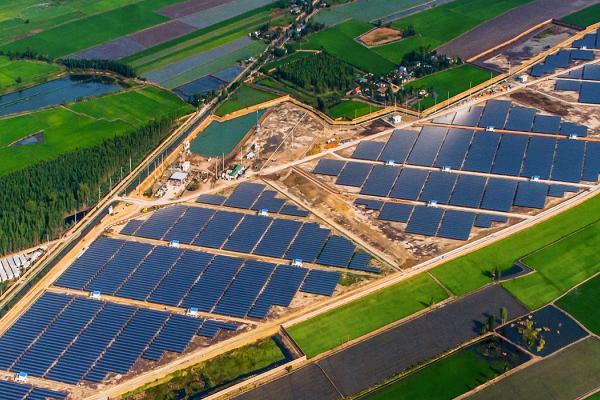The Clean Power Plan, an EPA rule that would reduce the carbon pollution coming from our nation’s power plants, is arguably the crown jewel of the Obama administration’s climate plan. On Sept. 27, sixteen lawyers will duke it out before a panel of ten judges in oral arguments that will potentially decide its fate.
The regulation, which was finalized in August 2015 but stayed by the Supreme Court in February, is projected to cut U.S. power plant emissions 32 percent (from 2005 levels) by 2030. The Clean Power Plan isn’t the only thing the Obama administration has done on climate — far from it. According to estimates, it probably accounts for about a quarter of the emissions reductions that would meet our country’s pledge at the Paris climate talks last year. So it’s just one piece of the whole policy puzzle — but right now, it’s the most high-profile and important piece.
Today’s oral arguments, in West Virginia v. EPA, are before the D.C. Circuit Court of Appeals. The case — technically several separate legal challenges to the rule, all bundled together by the D.C. Circuit — is basically a nationwide neighborhood stand-off, and nearly everyone showed up.
Twenty-eight states, backed by a supporting cast of electric utilities, fossil-fuel industry groups, and hundreds of Republican members of Congress (and one West Virginia Democrat, Sen. Joe Manchin), are suing the EPA over the Clean Power Plan. Eighteen states, along with a slew of supporters including cities and mayors, public health groups, and Republican former EPA heads, are defending the rule.
A coalition of religious groups is also among the supporters of the rule. A group of forty Christian and Jewish organizations (including the National Council of Churches, the Coalition on the Environment and Jewish Life, Church World Service, and the Evangelical Environmental Network) filed an amicus brief in the case that makes two major points.
They state that people of faith have a strong moral imperative to care for creation. On this point, the brief cites sources from Jewish and Christian traditions, as well as declarations from Buddhists, Hindus, and Muslims to convey the unity of many major world religions on the importance of environmental stewardship.
The brief’s second point is that the Clean Power Plan is “incremental, not radical” and if anything it doesn’t go far enough given the urgency of the climate crisis.
(The full amicus brief, which you can find here, is worth the read).
To the first point I give a hearty “Amen.” As for the second point about the incremental nature of the Clean Power Plan, the evidence seems firmly in their camp. A recent investigation by Reuters showed that, despite the overwrought doom-and-gloom rhetoric of the states opposing the Clean Power Plan, eighteen of them are in fact on track to meet its requirements “with no changes to current plans.”
Interestingly, according to the Yale Project on Climate Change Communication, public opinion in the states suing the EPA is, in fact, firmly in support of the Clean Power Plan. This leads one to believe they probably don’t think that it will turn their states into jobless wastelands bereft of electricity.
So, the stage is set. Like a wonkier version of Captain America: Civil War, both sides have brought a ridiculous number of allies to this showdown. But what happens after today?
Court watchers think it will be a few months at the least before a decision is issued, and then it’s virtually certain that the losing side will appeal the case to the Supreme Court. And that’s where things get tricky.
With Justice Antonin Scalia’s passing earlier this year, the highest court in the land is deadlocked in a 4-4 tie on many major issues. If the Supreme Court were to take up the case and wind up with a 4-4 tie, the ruling of the D.C. Circuit would stand, for now.
If this case goes to before SCOTUS and the court is split, the future of the Clean Power Plan will ultimately be determined by who sits in the White House — a leader who has the power to appoint justices, and the power to rescind the Clean Power Plan if they so choose.
Our country’s plan to combat climate change hangs in the balance today.
Got something to say about what you're reading? We value your feedback!

